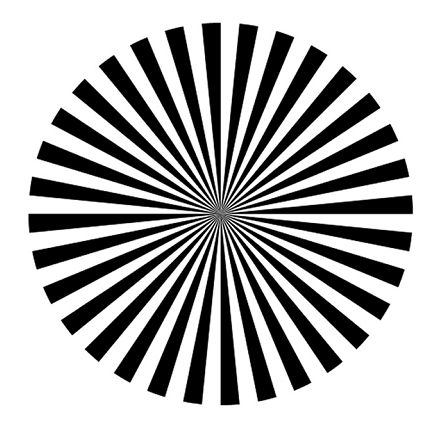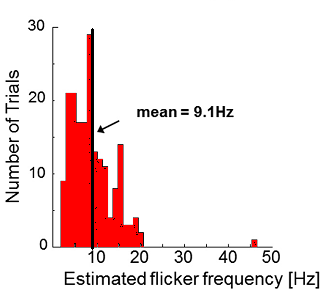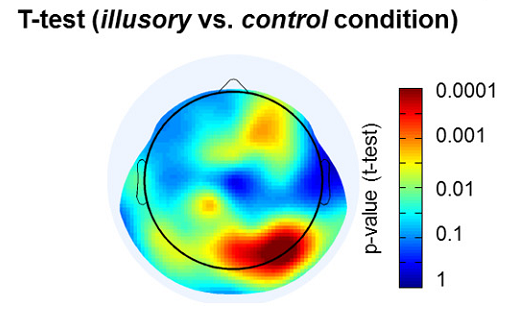
Can You See Your Own Brain Waves?
An intriguing new paper in the Journal of Neuroscience introduces a new optical illusion – and, potentially, a new way to see ones own brain activity.
The article is called The Flickering Wheel Illusion: When Alpha Rhythms Make a Static Wheel Flicker by Sokoliuk and VanRullen.
Here’s the illusion:

It’s a simple black and white “wheel” with 32 spokes.
To see the illusion, get the wheel in your peripheral vision. Look around the edge of your screen and maybe a bit beyond – you should find a ‘sweet spot’ at which the center of the wheel starts to ‘flicker’ on and off like a strobe light.
Remarkably, it even works as an afterimage. Find a ‘sweet spot’, stare at that spot for a minute, then look at a blank white wall. You should briefly see a (color-reversed) image of the wheel and it flickers like the real one (I can confirm it works for me).
By itself, this is just a cool illusion. There are lots of those around. What makes it neuroscientifically interesting is that – according to Sokoliuk and VanRullen – that flickering reflects brain alpha waves.
First some background. Alpha waves are rhythmical electrical fields generated in the brain. They cycle with a frequency of about 10 Hz (ten times per second) and are strongest when you have your eyes closed, but are still present whenever you’re awake.
When Hans Berger invented the electroencephalograph (EEG) and hooked it up to the first subjects in 1924, these waves were the first thing he noticed – hence, “alpha”. They’re noticable because they’re both strong and consistent. They’re buzzing through your brain right now.

But there’s a mystery – why don’t we see them?
Alpha waves are generated by rhythmical changes in neuronal activity, mainly centered on the occipital cortex. Occipital activity is what makes us see things. So why don’t we see something roughly 10 times every second?
It’s hard to say what we ‘ought’ to see – perhaps flashing lights, or colors, or patterns – but it is rather interesting that we don’t see (or feel or hear) anything at alpha frequency.
Or do we? Sokoliuk and VanRullen argue that the flickering of the wheel is related in some intimate way to alpha. They offer two lines of evidence here.
Firstly, in a task in which people had to compare the illusionary flicker against a wheel that was actually flickering at different frequencies, the most popular frequency perceived as matching the illusion was 9.1 Hz – i.e. a typical alpha waveone.
But there was a lot of variability:

Secondly, the authors say that perceiving the illusion (not just seeing the physical wheel) causes increased alpha waves:

How could this happen? The authors speculate that there’s a:
Correspondence between the spatial organization of visual cortex (retinotopy, cortical magnification, lateral connections) and the temporal dynamics of neuronal information propagation (neuronal time constants, conduction delays)…
Once alpha activity reaches a critical threshold, the rapid alternation of favorable and less favorable phases for sensory processing produces a “pulsed-inhibition” that can become visible as a regular flicker in the center of the wheel.
This is an extremely cool set of experiments, but to my mind they haven’t yet shown a ‘smoking gun’ which proves that the flicker really is alpha, as opposed to being something that happens to provoke alpha, and be of roughly alpha frequency.
Perhaps a smoking gun would be to show a correlation between an individual’s own alpha frequency (these, we know, differ between people, but are very stable for each individual) and that person’s perceived flicker rate.
Sokoliuk R, & Vanrullen R (2013). The Flickering Wheel Illusion: When Alpha Rhythms Make a Static Wheel Flicker. The Journal of Neuroscience, 33 (33), 13498-504 PMID: 23946408



